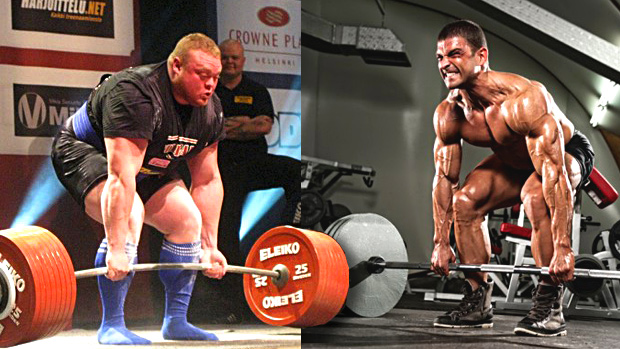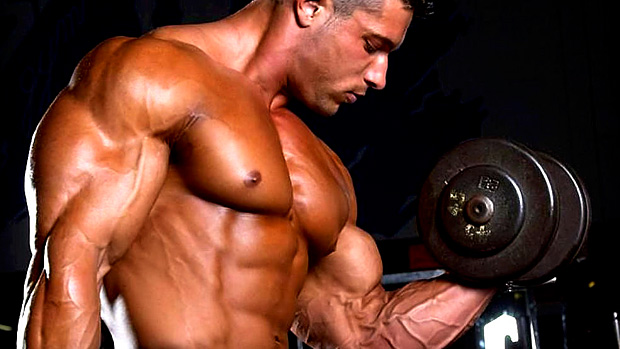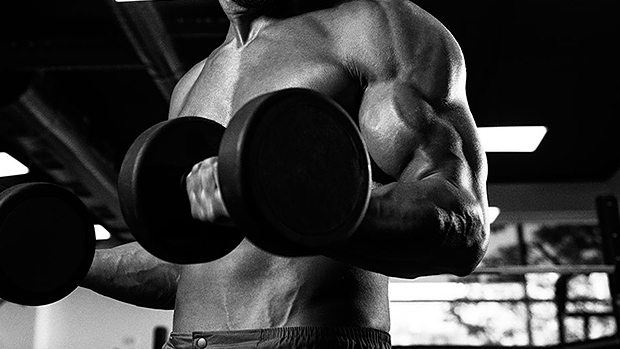Here's what you need to know...
- Powerlifters know their stuff. But sometimes non-powerlifters follow their advice to their detriment.
- Powerlifters teach us to focus first on strength, emphasize good form, and narrow our focus. All good.
- Good technique for powerlifting is not always good technique for physique or performance training purposes.
- The powerlifting emphasis on maximal strength above all else isn't ideal for most lifters. Most are better off getting really strong at a moderate rep range.
- Unless you're a competitive powerlifter, the "Big 3" lifts are not the end-all, be-all exercises. There are other options just as effective.
Today, a lot of strength training advice comes from powerlifters and is based on powerlifting principles.
Want to get bigger? Focus on the squat, bench, and deadlift and throw in some assistance work to improve those lifts and you'll be good.
Want to burn fat? Focus on the squat, bench, and deadlift and throw in some assistance work to improve those lifts and you'll be good.
Want to get stronger for sports? Focus on the squat, bench, and deadlift and throw in some assistance work to improve those lifts and you'll be good.
I'm surprised I haven't read someone claim that the "Big 3" can cure cancer! Listen, powerlifters certainly have a lot to offer the lifting community. I've learned a ton from powerlifters.
But for the non-powerlifter looking to get bigger, burn fat, or improve their sports performance, powerlifting isn't the be-all-end-all. It's like Bruce Lee said: Absorb what is useful and discard what is useless.
With that in mind, let's examine the pros and cons of powerlifting for the non-powerlifter.
1. Primary Focus on Strength
The biggest thing that non-powerlifters can take from powerlifters? Building a solid foundation of strength above all else. Getting stronger is beneficial to any fitness-related goal, from building muscle to burning fat.
You can't go wrong with strong.
For the powerlifter, everything starts and ends with strength because that's obviously the primary goal. Different goals usually require focusing on other qualities in addition to strength, but building a good base of strength should be a big part of your focus – the biggest, in fact – and should help form the foundation of your program.
Far too often I see people abandon basic heavy strength training when their goals are more physique-related, using the rationale that "I don't care how much I lift, I just want to look good."
If they're chasing fat loss they'll abandon heavy lifting altogether and instead focus on higher rep circuit-type stuff combined with a hefty dose of "gerbil cardio." Both have a place in a fat loss program, but they should be used to augment a basic strength-training program, not supplant it.
Those looking to build muscle often look to pro bodybuilders, who do more isolation work and "pump" training. They reason that this approach must be more effective for building muscle mass. There's no problem with doing some isolation work and chasing a pump. Both have value when you're looking to add muscle mass.
But here's the thing that too many people overlook: Those bodybuilders doing pump-type training are almost invariably strong as shit.
They've already paid their dues building a foundation of strength. And they're chasing that pump with heavier weights than most skinny guys use for their strength work!
If your max bench press is 200 pounds and you're desperate to build a bigger chest, don't look at the bodybuilder doing 80 pound flyes and think that you should be doing flyes too.
Doing 80 pound flyes will definitely build muscle, but realize that to build up to the point where you can do 80 pound flyes, you must first put in the work building your pressing strength. Otherwise you'll be doing 25 pound flyes and well, that's just embarrassing.
2. Emphasis on Good Form
Another positive: Powerlifters emphasize good form. And good form in powerlifting means using a full range of motion – another plus.
A lot of people spend their time searching for the latest-and-greatest program to jumpstart their progress. The real problem? Their form sucks and they do everything with a partial range of motion, either due to too much ego, lack of mobility, or both.
While good programming is important, the best thing a trainer can do to help his clients is teach good technique. Any idiot trainer can copy someone else's program. What separates good trainers from bad trainers is the ability to get clients to execute the program well.
Powerlifters take the time in the beginning to hammer home good technique to the point where it becomes automatic before they worry about anything else. They know that good technique is more effective and safer. Take notes and do the same.
3. A Narrow, Defined Focus
The goals of powerlifting are ultra clear, defined, and focused: to increase the squat, bench, and deadlift. And the goal never changes. It's the same month after month and year after year.
Successful powerlifters do a great job of making sure that everything in their program contributes to that goal. They don't sabotage themselves by doing extraneous things to hurt their performance on those exercises.
Contrast that with the average gym goer who continually spins his wheels year after year because he either tries to pursue too many goals at once or, even worse, doesn't have any goals and just wings it on a daily basis.
One day they'll be hell-bent on increasing their pull-ups, then the next squat workout they'll get excited and want to do a leg specialization program only to realize two workouts later that it's hard and it sucks, at which point they'll want to try the cool circuit-based routine they read in a magazine.
Whatever the case may be, the most successful people are those with clear and defined goals that stick to the same goal for an extended period of time.

1. Focused Too Heavily on Maximal Strength
Powerlifters spend a lot of time training in the 1-5 rep range. They'll even joke that anything over five reps is "cardio."
That obviously makes sense for powerlifting where maximal strength is the goal. But for the non-powerlifter, it's not wise to spend all your time training in very low rep ranges.
In fact, my clients rarely go under five reps on anything, and most spend the majority of the time focusing on getting as strong as possible in the 6-12 rep range on most exercises. Training in more moderate rep ranges is far safer and also more effective for hypertrophy purposes.
Maximal strength matters for powerlifting and for being able to brag to your buddies, but other than that, the rest of us are far better served getting strong in moderate rep ranges.
By the way, if you really think anything over five reps is cardio, it's time to get in shape!
2. Good Form Is Based on Lifting As Much As Possible
I love the emphasis that powerlifters place on technique, but good technique for powerlifting purposes is not always good technique for physique or performance training purposes.
There's certainly a lot of overlap, but it's important to realize that in powerlifting the goal is simply to move as much weight as possible, whereas most non-powerlifters perform exercises with the goal of optimally working certain parts of the body.
For example, it's one thing for a powerlifter to use an excessive arch on the bench press to shorten the range of motion as much as possible, but I wouldn't advise someone to do that who's benching for their pecs or doing close-grip bench to build triceps.
Similarly, a lot of powerlifters assume a wide stance for squatting and try to make the movement as hip dominant as possible. But if you're squatting for quad development it makes more sense to assume a more narrow stance and try to remain as upright as possible.
Finally, powerlifters try to make their form as efficient as possible. But for physique purposes it can be beneficial at times to try to lift more inefficiently and really "feel" the weight.
3. Too Focused on the "Big 3"
Powerlifters are dogmatic about the Big 3 lifts, even for non-powerlifters. Those three exercises are put on a pedestal and everything else is marginalized to "assistance" or "accessory" lifts.
Again, this makes sense if you're a powerlifter, but for everyone else it's absurd.
Having a few key lifts that you focus on and use as a barometer to measure progress is great, but for the non-powerlifter, there's nothing magical about the squat, bench, and deadlift.
There's nothing wrong with them either. I like all three and use them if the situation calls for it, but they're certainly not absolutely essential like a powerlifters would lead you to believe.
What's more, many people simply shouldn't be doing the three powerlifts, either for injury reasons or because their body structure just doesn't lend itself well to the exercise.
That's blasphemy to a lot of powerlifters, who will call you a pussy for even suggesting something other than the Big 3, but if you're not competing there are no mandatory exercises.
The key then becomes to find a few compound movements that feel good to you – meaning you feel them working the areas you're looking to work and they don't cause pain – and make them your bitch.
Don't worry if the exercises you like are deemed to be "assistance" exercises by the powerlifting community. Powerlifters like to judge exercises based on their carryover to the squat, bench, and deadlift. But who cares about carryover if you aren't being tested in those lifts, or any lifts for that matter? An assistance exercise is just an exercise that brings you closer to your goal, whatever that might be.
If your goal to build a bigger chest but you've never felt the bench press much in your pecs or benching gives you shoulder pain, you'd be much better off switching to an incline press or a low-incline dumbbell press.
If conventional deadlifts bug your lower back, rather than stubbornly continue to do them, try trap bar deadlifts, rack pulls, or RDLs.
If squats bug your knees or lower back, or if you always seem to turn your squats into something that more closely resembling a good morning despite working on your form, try front squats, Bulgarian split squats, or low-handle trap bar squats.
In short, non-powerlifters can learn a lot from powerlifters. But if you're not competing, keep an open mind. Listen to Bruce Lee.





